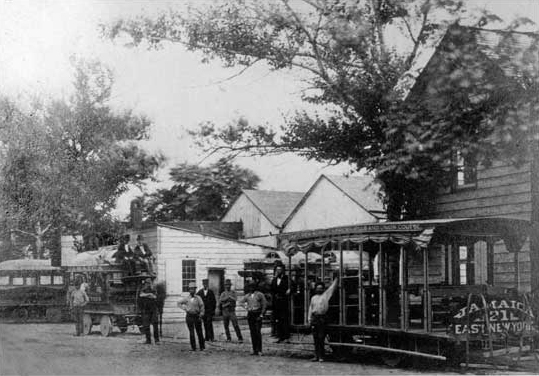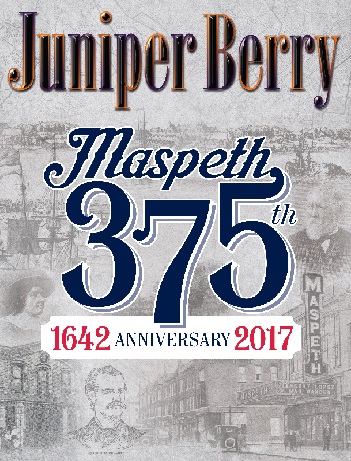Charles Van de Poele's electric trolley installation opened on Jamaica Avenue, between East New York and Jamaica and proved to be superior to the horse cars. One by one, horse car and steam dummy lines in Brooklyn, Queens and elsewhere were replaced by trolleys. Brooklyn, being densely populated, had many small companies which eventually merged into the behemoth BRT subway, elevated and trolley system. The baseball team is so named because Brooklynites were dodgers of trolleys. Queens, meanwhile, had some BRT lines plus a few systems which had converted to buses (Steinway Transit and Jamaica Buses) by WWII.
The trolley age reached its peak it about the end of World War I, then declined. The automobile and motor coach came about. Many systems were abandoned or converted to bus operation. The BRT (reorganized as the BMT) management, strongly trolley-minded, ordered a total of 735 “6000” and “8000” series, large center door, Peter Witt model trolleys in the 20s and 30s. The BMT ordered 101,000 series PCC (Presidents Conference Committee) state-of-the-art trolleys in 1936 – the first system to do so.
With the Hyland and LaGuardia administrations strongly anti-trolley bustitution was speeded up. However due to a gasoline and rubber shortage, some, including all BMT West Queens lines were to remain until after World War II. On April 26, 1950 the last remaining BMT line, Richmond Hill, had its 8000 series flagship Peter Witt replaced by light green and silver B53 city buses. On October 31, 1956, at Church and McDonald Avenues, the final two lines of the once seemingly immortal BMT trolley system received buses. A year later the Dodgers went west. The end of trolley operation in New York State occurred on April 7, 1950 when the tiny Queensborough Bridge Railway was abandoned. Thus the end of an era when a breezy trolley ride to the ballpark was a way of life. Simpler, more innocent times may return. We have the dodgers, we just need the trolleys.
After more than half a century, light rail may return to Brooklyn and Queens. Mayor Bill de Blasio has proposed a nearly 16 mile long streetcar line from Sunset Park in Brooklyn through Red Hook, Brooklyn Heights, the Brooklyn Navy Yard, Williamsburg, Greenpoint, Long Island City, the Queens Plaza area, Ravenswood, and northward to Astoria, ending near the Triboro/RFK bridge. Called the Brooklyn-Queens Connector or BQX, construction could begin as early as 2019.




